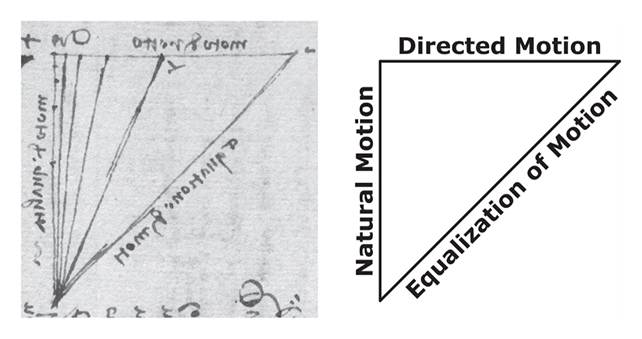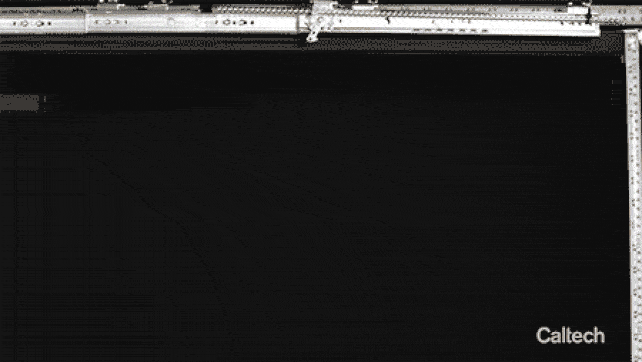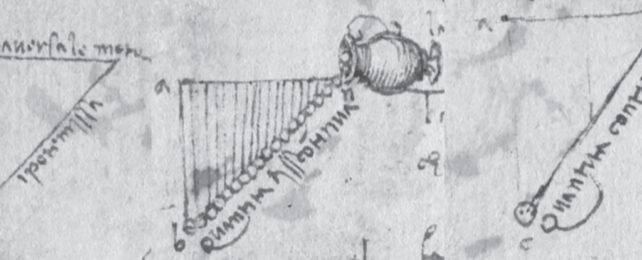Isaac Newton is credited with first formulating a theory of gravity in the latter half of the 17th century – apparently inspired by an apple falling from a tree – but fundamental aspects of gravity's pull were also recognized by Leonardo da Vinci more than a hundred years earlier, a new study explains.
The study analyzed diagrams in Leonardo's now-digitized notebooks, including sketches of triangles that show the relationship between natural motion, directed motion, and the equalization of motion – a recognition that gravity is a kind of acceleration.
In Leonardo's case, this involved thinking about sand pouring from a jar. What the polymath realized was that if the jar was pulled along a horizontal plane at the same speed as the force pulling down the grains, the sand would form the hypotenuse of a triangle. This realization of the change in speed a falling object undergoes over time forms a crucial step on the way to finding the gravitational constant on Earth.

"About 500 years ago, Leonardo da Vinci tried to uncover the mystery of gravity and its connection to acceleration through a series of ingenious experiments guided only by his imagination and masterful experimental techniques," write the researchers in their published paper.
This gravitational constant would later be used by Newton to define his laws of motion (including gravity), and by Albert Einstein in his theory of general relativity. Leonardo knew he had found something, but he wasn't certain quite what it was.
Part of that uncertainty was because Leonardo subscribed to Aristotle's idea of continuous force known as impetus, which fills projectiles and provides them with a drive to move against gravity. The principle of inertia – where objects simply continue to travel in a direction until they're met with an opposing force – had not yet been established in the science of the time.

Gravity, meanwhile, was explained by Aristotle as a tendency for materials to arrange themselves according to a natural order. In other words, gravity and flying projectiles were explained by two very different theories.
While there were errors in his calculations, recreations of Leonardo's experiments in the lab revealed his algorithm calculated the elusive gravitational constant ("g") to 97 percent accuracy, compared with modern methods and equations.
"By developing a geometrical equivalency approach to demonstrate the laws of motion, Leonardo showed remarkable insight into the dynamics of falling objects by avoiding the need to know the exact value of 'g', as long as we assume that 'g' represents the rate of change of velocity or acceleration," write the researchers.
"If he conducted the experiment that he depicted in his manuscript, then he could have been the first human who knowingly generated a 'g' force effect without being in a free-fall condition."
The researchers were particularly impressed with Leonardo's methods, using what was available to him at the time – primarily geometry – and using that to investigate something unknown. That same innovation can still be applied to science today.
Newton didn't come up with his law of universal gravitation on his own: Galileo recognized the relationship between free fall motion and time in 1604, while Newton himself credits the findings of Bullialdus and Borelli in informing his theories.
As it turns out, Leonardo da Vinci was on the right track too, identifying patterns in the way that objects fall that would later be used to explain the movements of stars and planets – and famously to predict the existence of Neptune.
"We don't know if [Leonardo] did further experiments or probed this question more deeply," says mechanical engineer Morteza Gharib from the California Institute of Technology.
"But the fact that he was grappling with the problems in this way – in the early 1500s – demonstrates just how far ahead his thinking was."
The research has been published in Leonardo.
